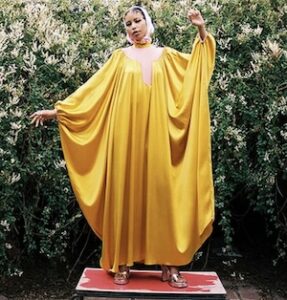Design Classics: Lucienne Day Exhibition
By Jo Phillips
Deciding on interiors and furnishings for your home can be an incredibly personal choice. Budgets aside, the decision is not to be taken lightly as how we furnish our homes can reveal a lot about our tastes, personalities, and preferences.
Whether you value day dates to Ikea or prefer wandering though eclectic vintage furniture stores, the choice of furnishings available to you can be overwhelming. So, before an argument erupts with your other half about whether a statement rug trumps a feature wall or if it was necessary to upholster the sofa to match the new cushions (answer: yes it was!), it will probably do you both the world of good to explore the Museum of Carpet’s latest exhibition, Lucienne Day: Living Design, which celebrates the life and work of Lucienne Day, one of most influential designers of the post-war generation.
In collaboration with the Robin and Lucienne Day Foundation, the Museum of Carpet will, for the first time ever, display their entire archive of Lucienne Day’s ground-breaking designs to highlight many different aspects of her work.
Located in the historic textile town of Kidderminster, The Museum of Carpet is a museum dedicated to the celebration of the industrial heritage and social history of Kidderminster. The growing demand for carpet became a significant production for the town during the mid-twentieth century when local carpet manufacturers recognised the need to create more contemporary design for an ever-growing modern market.
Lucienne Day was an influential British textile designer, emblematic of post-war Britain. Day’s designs were certainly adventurous as they were typically inspired by her adoration for modern art – particularly the likes of Wassily Kandinsky, Joan Miró and Paul Klee. Although such abstraction is evident in her work, Day also preserved the English tradition of incorporating motifs deriving from her love of nature.
Day’s career breakthrough was at the Festival of Britain in 1951 with the pioneering design Calyx, a large-scale abstracted pattern composed of cup-shaped motifs connected by spindly lines. Day wanted her designs to be both affordable and accessible for all, and in 1952, designed Flotilla “for people who like Calyx but have smaller windows and purses”. It was imperative to Day that for those couple who wanted to build a home but were unable to purchase paintings could at least buy a pair of curtains with an abstracted design. By connecting mass production and fine art, Day’s designs have an enduring vitality about them and are still manufactured today, and can be purchased through John Lewis or TwentyTwentyOne.
 Calyx & Flotilla screen-printed furnishing fabric, Lucienne Day, Heal’s Wholesale & Export, 1951. Source: Robin and Lucienne Day Foundation archives, The Robin and Lucienne Day Foundation.
Calyx & Flotilla screen-printed furnishing fabric, Lucienne Day, Heal’s Wholesale & Export, 1951. Source: Robin and Lucienne Day Foundation archives, The Robin and Lucienne Day Foundation.
This exhibition is a unique opportunity to discover many of the Day’s hand painted original artwork for her designs. Lucienne Day: Living Design is open to the public at The Museum of Carpet, Kidderminster from Saturday 1st July – Saturday 30th September 2017.
Visit The Museum of Carpet for more information.






